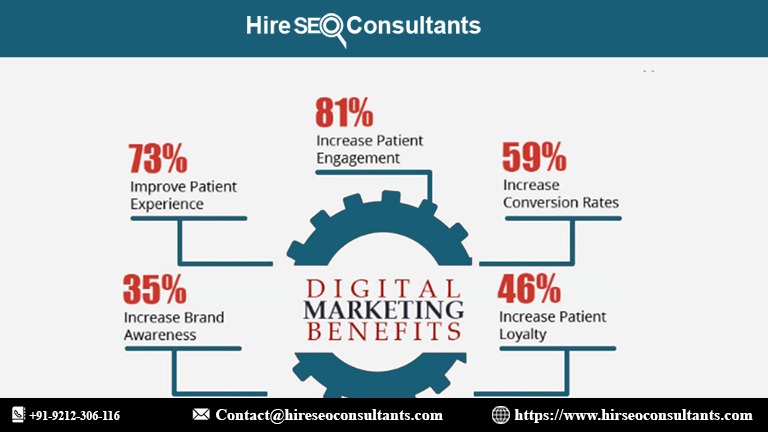Life Insurance for Stay-at-Home Parents Securing Financial Stability for Your Family
In today's world, stay-at-home parents play a crucial role in maintaining household stability.

In today's world, stay-at-home parents play a crucial role in maintaining household stability. While their contribution is often undervalued, it is essential for family financial planning. Life insurance for stay-at-home parents is a key component in ensuring that their families remain financially secure in the event of an unexpected loss. Here’s how life insurance for stay-at-home parents impacts family financial planning and strategies to ensure adequate protection.
The Financial Role of Stay-at-Home Parents
Stay-at-home parents manage numerous responsibilities, from childcare to household management, which, if replaced, could result in substantial financial strain. Their contribution goes beyond the visible chores; it encompasses significant economic value that must be accounted for in financial planning. Without life insurance, the family might face increased costs for childcare, household services, and other expenses that a stay-at-home parent typically covers.
The Importance of Life Insurance for Stay-at-Home Parents
Life insurance for stay-at-home parents provides financial support to cover these potential costs and ensures the family's financial stability. Here’s why it’s essential:
-
Income Replacement: While stay-at-home parents do not earn a traditional salary, their work is crucial. Life insurance ensures that the family can afford professional services needed to replace their daily tasks and responsibilities.
-
Debt and Mortgage Coverage: If the family has outstanding debts or a mortgage, life insurance can help cover these expenses, alleviating financial stress during a challenging time.
-
Future Expenses: Life insurance can help cover future expenses such as college tuition for children or other long-term financial goals.
Choosing the Right Life Insurance Policy
Selecting the appropriate life insurance policy involves considering various factors to ensure it aligns with your family’s needs. Here are some policy options:
1. Term Life Insurance
Term life insurance provides coverage for a specific period, such as 10, 20, or 30 years. It is often more affordable than other types of policies. This option is suitable for families who need coverage during the years when financial responsibilities are highest. By using a life insurance calculator, you can determine the coverage amount needed based on your family's requirements and the length of the term.
2. Whole Life Insurance
Whole life insurance offers coverage for the insured’s entire life and includes a savings component known as cash value. This policy tends to have higher premiums but provides lifelong protection and can accumulate cash value over time, which can be borrowed against or used to cover future expenses.
3. Universal Life Insurance
Universal life insurance combines flexible premiums with an investment component. It allows policyholders to adjust their premiums and coverage amounts as their financial situation changes. This type of policy provides both death benefits and the potential for cash value growth.
4. Guaranteed Issue Life Insurance
Guaranteed issue life insurance does not require a medical exam, making it accessible to those with pre-existing conditions or high-risk individuals. It is typically used for final expense coverage but can be an option for those who may have difficulty obtaining other types of policies.
Strategies for Adequate Protection
Ensuring adequate protection through life insurance involves several strategic considerations:
1. Assessing Coverage Needs
Calculate the financial impact of losing a stay-at-home parent. Consider costs for childcare, household services, and any debts or financial obligations. Use life insurance quotes and life insurance rates from various providers to compare options and determine the right amount of coverage.
2. Compare Different Policies
Conduct a life insurance comparison to evaluate different types of policies and their benefits. Compare best life insurance providers and their offerings to find the most suitable plan for your family’s needs.
3. Involve a Life Insurance Agent
Consult with life insurance agents near me to receive personalized advice and explore various policy options. An agent can help you navigate different plans and choose the best life insurance policies for your situation.
4. Consider Joint Life Insurance
Joint life insurance policies cover two people under one plan and can be beneficial for couples. This type of policy can be structured to pay out on the death of the first or the second insured, depending on the family’s needs.
5. Review and Update Policies Regularly
As your family’s financial situation and responsibilities change, review and update your life insurance policy accordingly. Regular updates ensure that your coverage remains adequate for your evolving needs.
Life insurance for stay-at-home parents is a vital component of comprehensive family financial planning. It provides essential protection and peace of mind by covering potential financial gaps and ensuring that the family remains secure in the face of unexpected loss. By selecting the right policy, assessing coverage needs, and consulting with experienced professionals, families can achieve the financial stability they need. Explore life insurance quotes and compare life insurance policies to find the best options for your family's unique needs and circumstances.
The Importance of Life Insurance for Stay-at-Home Parents and How to Find the Best Coverage
Stay-at-home parents play a crucial role in their families, managing household responsibilities, childcare, and often handling financial tasks. Despite their significant contributions, their work is sometimes undervalued in discussions about life insurance. Understanding why life insurance for stay-at-home parents is essential and how to secure the best coverage can help protect families in unexpected situations.
Why Life Insurance for Stay-at-Home Parents is Essential
-
Valuation of Non-Monetary Contributions
Stay-at-home parents contribute significantly to the household. Their roles include childcare, household management, and supporting their spouse’s career. If something were to happen to them, the family would face substantial costs for childcare, housekeeping, and other services. Life insurance for stay-at-home parents ensures that these costs are covered, helping to maintain the family's financial stability.
-
Financial Security
The financial security of a family is closely tied to the well-being of its stay-at-home parent. Life insurance can provide a safety net, covering expenses such as funeral costs, outstanding debts, and day-to-day living expenses. This coverage can help alleviate the financial strain during a difficult time, allowing the family to focus on healing.
-
Future Planning
Life insurance is not just about the present; it's also about securing the future. It can help with long-term financial goals like college education for children, estate planning, and mortgage protection. Having a policy in place ensures that these plans are not derailed by an unexpected loss.
Types of Life Insurance Coverage for Stay-at-Home Parents
When selecting life insurance for a stay-at-home parent, it’s essential to understand the different types of policies available and how they fit specific needs:
-
Term Life Insurance
Term life insurance offers coverage for a specified period, typically 10, 20, or 30 years. It is often more affordable compared to other types of insurance and provides a death benefit if the insured passes away within the term. This type of policy is ideal for families looking for budget-friendly options to cover specific needs, such as mortgage protection or childcare costs.
-
Whole Life Insurance
Whole life insurance provides coverage for the insured’s entire lifetime, as long as premiums are paid. It also builds cash value over time, which can be borrowed against or used for other financial needs. This type of policy can be beneficial for families seeking lifelong protection and a savings component for future needs.
-
Universal Life Insurance
Universal life insurance combines a death benefit with a savings element that grows based on interest rates. It offers flexible premiums and death benefits, making it suitable for families with changing financial situations. This policy allows for adjustments based on life changes, providing both protection and adaptability.
-
Guaranteed Issue Life Insurance
Guaranteed issue life insurance does not require a medical exam and is available to individuals regardless of their health status. This type of policy is beneficial for those who may have health issues but still need coverage. However, it may come with higher premiums and lower coverage amounts.
-
No Medical Exam Life Insurance
No medical exam life insurance offers a streamlined application process without requiring a medical exam. It’s ideal for those who prefer a quicker and less invasive application process but may come with higher rates and lower coverage amounts compared to policies requiring medical underwriting.
Tips for Finding the Best Life Insurance Coverage
-
Assess Your Coverage Needs
Start by evaluating your family’s financial needs, including debts, living expenses, childcare costs, and future goals. Use a life insurance calculator to estimate the amount of coverage required to ensure your family’s financial security.
-
Compare Life Insurance Policies
Life insurance comparison tools can help you compare different policies and providers. Look at coverage options, premiums, benefits, and exclusions to find a policy that fits your needs. Ensure that the policy provides adequate coverage for your family's unique situation.
-
Obtain Multiple Quotes
Gather life insurance quotes from different providers to find the most competitive rates. This step will help you understand the cost of coverage and choose a policy that fits your budget while providing the necessary protection.
-
Choose the Right Insurance Provider
Select a provider with a strong reputation for customer service and claim handling. Research the best life insurance companies and read customer reviews to ensure that you are working with a reliable and trustworthy insurer.
-
Consider Your Health and Lifestyle
Your health and lifestyle can impact your life insurance rates. If you have specific health concerns or high-risk factors, such as smoking or diabetes, be sure to look for policies tailored to these conditions, such as life insurance for diabetics or life insurance for smokers.
-
Review Policy Benefits
Look for policies that offer additional benefits, such as life insurance with living benefits, which provide coverage for critical illnesses or disabilities. These features can offer extra protection and financial support in challenging times.
-
Consult with a Professional
Work with a life insurance agent to navigate the complexities of different policies and find the best coverage for your needs. An experienced agent can provide valuable insights and help tailor a policy to your specific situation.
-
Reevaluate Regularly
Regularly review and update your life insurance policies as your family’s needs and financial situation change. Major life events, such as having more children or changing jobs, may require adjustments to your coverage.
Life insurance for stay-at-home parents is a crucial component of family financial planning. It ensures that the significant contributions of stay-at-home parents are recognized and protected. By understanding the different types of policies available and following tips for finding the best coverage, families can secure their financial future and provide peace of mind. Whether you are considering term life insurance, whole life insurance, or universal life insurance, taking the time to evaluate your needs and explore options will help you make informed decisions that benefit your family in the long run.
Key Benefits and Differences from Traditional Policies- Life Insurance for Stay-at-Home Parents
Life insurance is often perceived as a necessity for working individuals, but stay-at-home parents also play a critical role in a family’s functioning. Life insurance for stay-at-home parents is essential, as it provides financial protection and peace of mind. Here’s a detailed look at the benefits and how it compares to traditional life insurance policies.
Key Benefits of Life Insurance for Stay-at-Home Parents
-
Financial Protection for the Family Stay-at-home parents contribute significantly to the household through childcare, housekeeping, and other responsibilities. In the unfortunate event of their passing, life insurance provides financial support to cover these roles. This ensures that the surviving spouse or family members can afford to hire help or manage additional expenses.
-
Replacement of Lost Services A stay-at-home parent’s contributions are often undervalued, but they are critical to the household's daily operations. Life insurance can help cover the cost of services that would need to be hired, such as childcare, cleaning services, or meal preparation, thus alleviating the financial strain on the family.
-
Debt and Financial Obligations Even if a stay-at-home parent doesn’t contribute directly to the family income, they still contribute to the household’s financial obligations. Life insurance can help cover debts and ongoing expenses, ensuring that the family’s financial stability is maintained.
-
Future Financial Security Life insurance provides a financial cushion that helps secure the future of the family. This includes funding for children’s education, retirement plans, and other long-term financial goals. The death benefit from a policy can be used to create an emergency fund or cover any unexpected expenses.
-
Estate Planning and Wealth Transfer Life insurance for stay-at-home parents can play a vital role in estate planning. It helps in transferring wealth to beneficiaries without the added burden of estate taxes or other financial complications, ensuring a smoother transition of assets.
How Life Insurance for Stay-at-Home Parents Differs from Traditional Policies
While the core principles of life insurance remain the same, there are some nuances when it comes to life insurance for stay-at-home parents compared to traditional policies.
-
Policy Amount Traditional life insurance often focuses on income replacement for working individuals. For stay-at-home parents, the focus is on the value of their contributions and the costs associated with replacing their services. Therefore, the policy amount may be adjusted based on these factors rather than just income.
-
Coverage Needs Term life insurance is often recommended for stay-at-home parents due to its affordability and straightforward coverage. It provides protection for a specified period and is ideal for covering short-term financial needs and obligations. Whole life insurance, on the other hand, offers lifetime coverage and includes a savings component, which might be beneficial for long-term financial planning and wealth transfer.
-
Policy Type and Flexibility Universal life insurance offers flexible premium payments and coverage amounts, which can be advantageous for adjusting the policy as family needs change. This flexibility is particularly useful for stay-at-home parents whose roles and responsibilities might evolve over time.
-
Medical Underwriting Guaranteed issue life insurance and no medical exam life insurance are options that might be considered for those who prefer to avoid medical underwriting. These types of policies can be beneficial for stay-at-home parents who may have difficulty obtaining traditional coverage due to health issues.
-
Premium Costs Since stay-at-home parents typically do not have an income that would be replaced, their premiums may be lower compared to traditional policies based on income replacement. Affordable life insurance options are available that cater specifically to these needs, ensuring that coverage remains within budget.
Choosing the Right Policy
When selecting a life insurance policy for a stay-at-home parent, it’s important to compare different types of policies and providers to find the best fit. Here’s a brief overview of the types you might consider:
- Term Life Insurance: Provides coverage for a specific period, ideal for short-term needs and more affordable premiums.
- Whole Life Insurance: Offers lifetime coverage with a savings component, suitable for long-term planning.
- Universal Life Insurance: Provides flexible premiums and coverage amounts, adapting to changing needs.
- Guaranteed Issue Life Insurance: Available without medical underwriting, beneficial for those with health concerns.
Finding the Best Life Insurance
To find the best life insurance for stay-at-home parents, it’s crucial to evaluate life insurance quotes from multiple providers. Consider factors such as life insurance rates, policy options, and customer service ratings. Utilize a life insurance calculator to estimate your needs and compare different life insurance policies.
Consulting with life insurance agents near me can also help you navigate the options and tailor a policy that meets your family’s unique needs. Ensure that the chosen policy aligns with your financial goals, whether it’s for mortgage protection, estate planning, or providing financial security for your children.
Life insurance for stay-at-home parents is a critical component of a comprehensive financial plan. It provides essential financial protection, helps cover the cost of lost services, and secures the family’s future. By understanding the unique benefits and differences from traditional policies, you can make informed decisions that best serve your family’s needs. Whether you opt for term life insurance, whole life insurance, or another type, the key is to ensure adequate coverage that reflects the true value of the stay-at-home parent’s contributions to the family.
For families in cities like Pittsburgh, San Antonio, Baltimore, Columbus, and Portland, exploring local options and getting personalized advice can further enhance your decision-making process.
How Life Insurance for Stay-at-Home Parents Secures Financial Stability for Families
When a stay-at-home parent manages the household and childcare responsibilities, their role is invaluable, yet often underestimated in terms of financial value. Life insurance for stay-at-home parents is crucial for securing financial stability and ensuring that the family’s needs are met in case of an unexpected event. This article explores how life insurance can protect your family and what factors to consider when choosing a policy.
Why Life Insurance for Stay-at-Home Parents Matters
1. Financial Security: Although stay-at-home parents do not earn a salary, their contribution to the household is significant. In their absence, the family might face substantial expenses for childcare, household maintenance, and other services. Life insurance for stay-at-home parents provides a financial safety net, covering these costs and helping the family maintain their lifestyle.
2. Replacement of Services: If a stay-at-home parent were to pass away, the family would need to replace their services, which could be costly. Life insurance benefits can cover expenses related to hiring childcare, cleaning services, or other household support.
3. Long-Term Financial Planning: Adequate coverage can also contribute to long-term financial goals, such as college savings for children or retirement planning. It ensures that the family’s financial future remains secure despite unforeseen circumstances.
Choosing the Right Life Insurance Policy
When selecting a policy, consider the following factors:
1. Type of Policy:
-
Term Life Insurance: Provides coverage for a specific period, such as 10, 20, or 30 years. It is often the most affordable option and is ideal if you need coverage for a specific time frame, like until your children are independent or your mortgage is paid off.
-
Whole Life Insurance: Offers lifetime coverage and includes a savings component that builds cash value over time. This policy tends to be more expensive but provides lifelong protection and potential for cash accumulation.
-
Universal Life Insurance: Combines flexible premiums with a savings component that earns interest. This type of policy allows you to adjust your premiums and death benefits as needed.
2. Coverage Amount:
Determine how much coverage is needed by calculating potential future expenses, including childcare, mortgage payments, and other household costs. Use a life insurance calculator to estimate the appropriate amount based on your family’s financial needs and obligations.
3. Affordability:
Choose a policy that fits within your budget. Affordable life insurance options are available, but it’s essential to balance cost with adequate coverage. Compare life insurance quotes from different providers to find the best rate and policy that meets your needs.
4. Policy Flexibility:
Consider policies that offer living benefits, such as critical illness coverage or options to adjust coverage amounts. This flexibility can be valuable if your family’s needs change over time.
5. Underwriting Requirements:
Some policies require extensive underwriting, while others offer more accessible options. Guaranteed issue life insurance and no medical exam life insurance can be suitable for those who prefer a simpler application process or have health concerns. However, these may come with higher premiums or lower coverage amounts.
6. Insurance Providers:
Select a reputable insurer with a strong track record. Research the best life insurance companies for their customer service, claims process, and financial stability. Life insurance agents near me can provide personalized advice and help you navigate your options.
Key Considerations for Different Needs
1. For Families with Young Children:
Life insurance for young parents is critical. It ensures that childcare costs and other expenses are covered in the event of an untimely death. Look for policies that offer comprehensive coverage and the flexibility to adjust as your family grows.
2. For Families with Existing Medical Conditions:
If you or a family member has health issues, such as being a diabetic or a smoker, finding the right coverage might be more complex. Seek policies that accommodate these conditions and provide adequate protection without prohibitive costs.
3. For Families Planning for the Future:
Consider policies with options for estate planning and retirement. Whole or universal life insurance policies can offer benefits beyond just death coverage, including investment opportunities and planning for future financial needs.
4. For High-Risk Individuals:
If you have a high-risk profession or lifestyle, such as being a construction worker or an athlete, choose a policy that reflects these risks and provides appropriate coverage. Ensure that the policy’s terms and premiums align with your specific needs.
Life insurance for stay-at-home parents is a crucial component of a comprehensive family financial plan. By carefully selecting the right type of policy and coverage amount, you can ensure that your family is protected from financial hardship and maintain stability in challenging times. Consider the factors discussed, use tools like a life insurance calculator, and consult with experienced life insurance agents to find the best policy for your family’s needs.
Whether you live in Pittsburgh, San Antonio, Baltimore, Columbus, or Portland, securing the right life insurance policy can provide peace of mind and financial security for your loved ones.
Common Misconceptions About Life Insurance for Stay-at-Home Parents and How to Make Better Coverage Choices
Life insurance is often associated with high-earning professionals and business owners, leading many to overlook its importance for stay-at-home parents. Understanding and addressing common misconceptions about life insurance for stay-at-home parents can significantly enhance their coverage and provide better financial protection for their families. Here are some prevalent myths and insights to help you make informed decisions.
Misconception 1: Stay-at-Home Parents Don't Need Life Insurance
One of the most common misconceptions is that stay-at-home parents don’t need life insurance. Since they aren’t earning a salary, their contribution is often undervalued. However, their role is crucial in managing household responsibilities, childcare, and other essential tasks. If a stay-at-home parent were to pass away, the surviving partner might need to hire help for childcare and household duties, which can be financially burdensome. Term life insurance can provide a safety net to cover these potential costs.
Misconception 2: Life Insurance for Stay-at-Home Parents is Too Expensive
Another myth is that life insurance is too costly for stay-at-home parents. In reality, many affordable life insurance options are available. Term life insurance, for example, is often less expensive than whole life insurance and can provide substantial coverage for a fixed period. For those on a budget, using a life insurance calculator can help find a plan that fits your financial situation while providing adequate coverage.
Misconception 3: Life Insurance for Stay-at-Home Parents is Only About Replacement Costs
Some people think life insurance for stay-at-home parents only needs to cover replacement costs for childcare and housekeeping. While these are important considerations, life insurance policies should also account for other financial impacts, such as the loss of a primary caregiver's emotional support and the potential long-term financial strain on the surviving partner. Whole life insurance or universal life insurance can offer additional benefits such as cash value accumulation and flexible premiums, providing broader coverage.
Misconception 4: The Amount of Coverage Needed is the Same for Everyone
It's a common belief that one-size-fits-all when it comes to life insurance coverage. The reality is that the right amount of coverage depends on individual circumstances. Factors such as the number of children, household income, and existing financial obligations must be considered. A personalized life insurance comparison can help determine the appropriate level of coverage needed for your specific situation.
Misconception 5: Pre-Existing Health Conditions Make Life Insurance Unaffordable
People often assume that having a pre-existing health condition, such as diabetes or a history of smoking, will make life insurance prohibitively expensive or even unattainable. However, many insurance providers offer options like guaranteed issue life insurance or no medical exam life insurance for individuals with health issues. Life insurance for diabetics and life insurance for smokers can be obtained with appropriate planning and by comparing various providers.
Misconception 6: Only High-Net-Worth Individuals Need Life Insurance
There's a misconception that life insurance is only necessary for high-net-worth individuals or business owners. In reality, every family can benefit from having a life insurance policy, including stay-at-home parents. Life insurance for families ensures that financial stability is maintained in the event of a tragedy, regardless of your financial status.
Misconception 7: Life Insurance Policies are Complicated and Difficult to Understand
Many people avoid purchasing life insurance because they find policies confusing. However, with the help of a knowledgeable life insurance agent near me, you can navigate the complexities and find a policy that meets your needs. An agent can assist with understanding different types of coverage, including final expense insurance and life insurance for critical illness, ensuring you make an informed choice.
Misconception 8: Life Insurance is Only for Mortgage Protection
Some believe life insurance is solely for covering mortgage payments. While this is a valid reason, life insurance for mortgage protection is just one aspect. Coverage should also consider other financial responsibilities and long-term needs, including estate planning and retirement. Universal life insurance can provide both coverage and investment opportunities, offering flexibility for future financial planning.
How to Choose the Best Coverage for Stay-at-Home Parents
-
Assess Your Needs: Start by evaluating your family's financial needs, including potential costs for childcare, household maintenance, and long-term financial impacts.
-
Compare Options: Use a life insurance calculator to explore different policies and find the most cost-effective solutions. Compare term life insurance and whole life insurance to determine what best suits your needs.
-
Consider Additional Benefits: Look into policies that offer extra benefits like living benefits or cash value accumulation. This can provide added security and flexibility.
-
Consult Professionals: Work with a life insurance agent near me who can provide expert advice and help navigate the various options available, ensuring you select the right policy.
-
Review Regularly: As your family's needs and financial situation change, regularly review your life insurance policies to ensure they continue to meet your needs.
By addressing these misconceptions and making informed decisions, you can secure the appropriate life insurance coverage for stay-at-home parents, ensuring peace of mind for you and financial stability for your family.
What's Your Reaction?

















